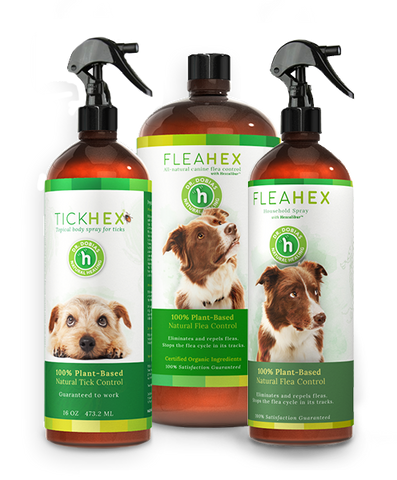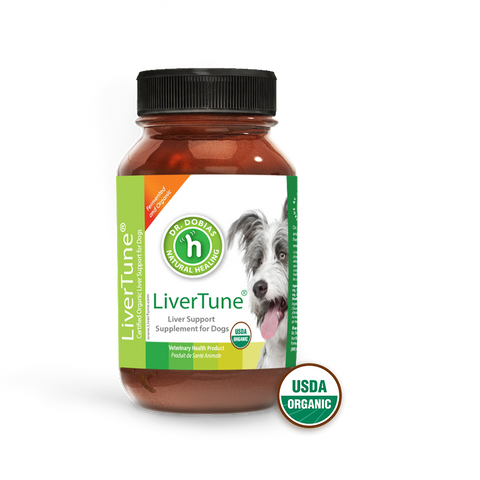
WHAT YOU NEED TO KNOW AND WHAT YOU CAN DO
Contents
Bartonella, formerly Haemobartonella or Eperythrozoon, adheres to the red blood cells of the host, potentially causing serious health issues.
It’s not really a bacteria and it’s not really a parasite, yet it has been found in cats, humans, and a large proportion of dogs with spleen, heart, and other forms of cancer. It also appears to play a role in cardiovascular disease.
There are several species of this parasite, such as Bartonella henselae, Bartonella vinsonii subsp. berkhoffii, and Bartonella koehlerae, and antibodies against them can be detected in serum using a PCR test.
Bartonella is often called a stealth pathogen because unlike other microorganisms it cannot be cultivated in a petri-dish. To detect and diagnose this pathogen, there are two tests that are commonly used.
DISEASE SYMPTOMS
Bartonella infection in dogs causes fever, heart inflammation (endocarditis and myocarditis) and cardiac valve disease, enlarged lymph nodes, and tissue swelling. Bartonella is also associated with gingivitis, cardiac arrhythmias, nasal inflammation and bleeding. Bartonella-associated endocarditis and heart valve disease occur in both humans and dogs.
Several species of Bartonella can also cause so-called cat scratch disease which can lead to severe infection, swelling, and inflammation of the affected area. I have seen this several times in practice where veterinary staff are often bitten or scratched by cats. Around 30-40% of cats carry Bartonella.
In addition to Bartonella transmission through cat bites or scratches, fleas and ticks are other important vectors. While the most common recommendation is to control fleas by using toxic chemical insecticides, I have seen severe reactions such as epilepsy result from their use.
Sadly, most flea and tick products on the market have caused fatalities and this is why I do not recommend any conventional flea control. Instead, I personally use and recommend effective natural flea and tick control products my team and I have developed.
HOW COMMON IS BARTONELLA?
Bartonella henselae bacteremia has been documented in up to 30-40% of domestic and adopted shelter cats, but these rates vary by location. Based on research, dogs do not appear to be the carriers of Bartonella, and while they are more likely to be infected from fleas, ticks, or via cat scratch or bite, I am happy to report there is no evidence of transmission from dogs to humans.
TREATMENT AND PREVENTION OF BARTONELLOSIS
In conventional medical settings, antibiotics such as Doxycycline, Rifampin, and Zithromycin are commonly used for the treatment of Bartonellosis, however, this treatment doesn’t always eradicate the disease, which makes general support and complementary treatments even more important to the outcome.
In addition to this challenge, Lyme disease is commonly present in tandem with Bartonellosis, as both can be transmitted by ticks. Similar to Borellia Burdogferi which causes Lyme disease, Bartonella has a tendency to compromise the immune system, making treatment more difficult.
The goal should be to develop a high level of resistance to Bartonella and prevent infections. If the infection has already taken place, the main goal (besides eliminating the pathogen) is to protect the red blood cells, spleen, and heart, and strengthen the immune system to help increase the body’s resistance.
Considering the nature of possible side-effects of Bartonellosis, such as heart valve disease and possible hemangiosarcoma, antibiotic therapy may be warranted and should be discussed with your veterinarian.
INTEGRATIVE AND SUPPORTIVE THERAPY:
SIMPLE STEPS TO HELP PREVENT OR SUPPORT DOGS DIAGNOSED WITH BARTONELLA
1. Omega-3 fatty acids are key in reducing inflammation, protecting the heart, and increasing the rate and speed of cell repair. Use FeelGood Omega as a preventive measure, and if your dog has been diagnosed with Bartonella you can triple the recommended dose.
2. Immune system repair is also key to a speedy recovery, as 80% of the immune system resides in the gut. Administer a high-quality non-dairy probiotic, and double the daily dose during the first month of treatment.
3. Provide your dog with an anti-inflammatory diet composed of raw meat, veggies, and edible raw bones.
For more information on how to feed a natural diet click here, and for the healthy dog food Recipe Maker click here.
4. 37 000 000 000 000 000 000 000 chemical reactions take place within the body every second, and this is why optimizing the body’s cell and organ function with high-quality full-spectrum minerals, amino acids and fermented organic vitamins should be part of this protocol.
SPECIFIC HERBAL TREATMENTS AND SUPPORT FOR BARTONELLA
Over the years, I have searched for a reliable source of information that would provide a clear research-supported list of nutraceuticals and herbs effective in the treatment of Bartonella.
Despite many online articles and blogs suggesting the use of certain herbal supplements to specifically address Bartonella infections, I have not found any direct studies confirming their efficacy.
However, there are several additional substances that will have a positive effect on dogs diagnosed with Bartonella, in addition to providing the supportive therapy mentioned above.
Here is the list:
1. L-arginine
L-arginine has been shown to have a positive effect on vascular health and endothelial repair (the lining of blood vessels and cardiac valves).
Note: Interestingly, cats, who are primary carriers of Bartonella, are very sensitive to L-arginine deficiency, however, I have not found any studies showing a direct connection between L-arginine deficiency and Bartonella infections.
Recommended dosage of L-arginine for dogs:
100mg – 300mg/kg/day (approx. 45 – 140 mg/lb/day).
There is no upper limit.
2. Cordyceps mushrooms
Cordyceps mushrooms are known to have anti-tumour and immune-enhancing effects. They also have a positive effect on cardiovascular function and provide benefits to patients with liver disease, kidney insufficiency, and Lyme disease.
Note: Cordyceps contain β-glucans that stimulate the macrophages that have a protective effect on the spleen, lymph nodes, bone marrow, and blood vessel lining.
Cordyceps dosage for dogs:
20 mg/lb/day (45 mg/kg/day)
3. Detox
Detox, liver support, and adaptogens reduce toxin levels in the body, support the liver and increase the body’s ability to adapt and resist external challenges and infections and are another important part of the treatment of Bartonella infections.
This is where LiverTune, a fermented, certified organic liver cleanse and detox comes into play. This product can be used every six months for four weeks as a preventive, or on an ongoing basis in the case of liver disease or infections such as Bartonellosis.
Recommended dosage for dogs:
- under 7 kg (15 lbs) – 1 capsule daily
- 7 – 22 kg (15 – 50 lbs) – 2 capsules daily
- 23 – 34 kg (51 – 75 lbs) – 3 capsules daily
- over 34 kg (75 lbs) – 4 capsules daily
BARTONELLA’S CONNECTION TO CARDIAC VALVE DISEASE, VASCULAR DISEASE, AND GINGIVITIS
From what we know about severe gingivitis, periodontal disease, and their connection to valvular heart disease in dogs, it makes sense to test for hemobartonella when these conditions are present.
Also, the Bartonella species appears to induce activation of hypoxia (low oxygen) inducing factors, and be responsible for endothelial (vascular lining) plaques and lesions which cause cardiovascular and heart valve disease.
In light of this information, dental hygiene in cats, dogs, and people is crucial in preventing Bartonella infection and consecutive cardiovascular disease, and cancer.
An important part of these preventive measures includes supplementation of EPA, one of the most valuable Omega 3 fatty acids that significantly reduces inflammation. Click here for more info.
A CONNECTION BETWEEN BARTONELLA AND MALIGNANT HEMANGIOSARCOMA?
As I mentioned above, numerous sources suggest and explore the possibility of Bartonella being closely connected with the occurrence of malignant hemangiosarcoma and hemangiopericytoma, which is also relatively common in dogs.
The question remains whether there is a connection to the general inflammatory process caused by the infection or the actual presence of the Bartonella species. In any case, taking precautions to prevent Bartonella infections (especially if you have feisty cats at home) is the route of least regret.
SUMMARY
BARTONELLA PREVENTION AND TREATMENT PLAN
- Provide a high-quality Omega-3 oil to reduce inflammation and promote cell repair.
- Give a non-dairy probiotic to increase immune function.
- Feed an anti-inflammatory natural raw diet.
- Include full spectrum minerals & amino acids, as well as fermented vitamins.
- Use L-arginine to support vascular health.
- Cordyceps mushrooms for immune support and anti-cancer properties.
- Detox and liver support to eliminate toxins, support healthy liver function, and boost resistance to infections.
References:
Molecular prevalence of Bartonella, Babesia, and hemotropic Mycoplasma species in dogs with hemangiosarcoma from across the United States – Erin Lashnits, Pradeep Neupane, Julie M. Bradley, Toni Richardson, Rachael Thomas, Keith E. Linder, Matthew Breen, Ricardo G. Maggi, Edward B. Breitschwerdt. January 10, 2020.
Infection of human brain vascular pericytes (HBVPs) by Bartonella henselae – Mrudula Varanat, Ricardo G Maggi, Keith E Linder, Edward B Breitschwerdt. November 25, 2012.
Splenic vasculitis, thrombosis, and infarction in a febrile dog infected with Bartonella henselae – Steven G. Friedenberg DVM, MS, DACVECC,Nandhakumar Balakrishnan PhD,Julien Guillaumin DVM, DACVECC, DECVECC,Edward S. Cooper VMD, MS, DACVECC,Kristin Lewis DVM,Duncan S. Russell BVMS, DACVP,Edward B. Breitschwerdt DVM, DACVIM. August 26, 2015.


